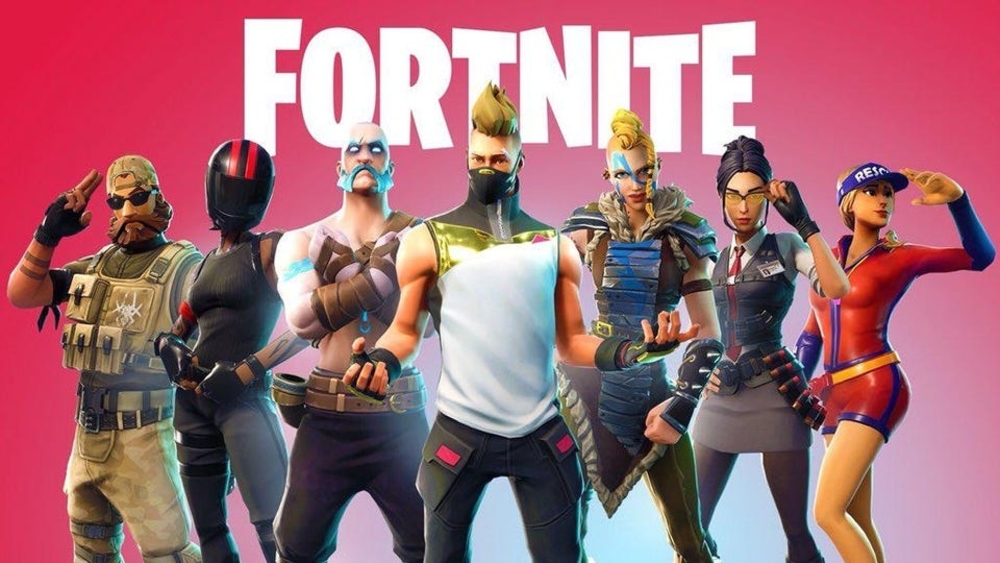Today, we will be featuring a panel from the Point Zero forum held in Zurich. Point Zero is an international fintech conference that was held from 21 to 23 June 2022. The exclusive invite-only event was co-organised by Singapore and Switzerland.
The panel was moderated by Rebecca Martin, the Head of Strategy at Elevandi. Yat Siu, the co-founder of Animoca Brands, was invited to speak on building an open Metaverse. Animoca is a renowned gaming software company and has a Web 3.0 investment portfolio in the Metaverse and other related projects.

Some of these early investments were in renowned Web 3.0 projects, such as OpenSea, Decentraland, Sandbox, Axie Infinity, and Dapper Labs.
Digital serfdom and the Metaverse

In today’s world, we spend the vast majority of our time online (e.g. Facebook, Instagram, video games, etc). For the first time in history, we are able to own digital assets verified by blockchain.
Our most valuable resource today is data. It empowers engines like Facebook, Amazon and Tencent. This data makes Web2 corporations profitable and enables them to become industry titans of today. They get all their data from users like us, and every minute we spend on these platforms gives them the data they need.
Firms take advantage of this to optimize their business strategies and personalize their marketing towards users – a hefty benefit indeed.
However, we get zero value back and are instead mined of our time and attention. This is actually exploitative in nature; in a way, platforms are digital colonialists and we are digital serfs.
A Metaverse is where we truly own our own time and data. This is where NFTs come in.
NFTs, Metaverse, and digital rights
NFTs are the first true representation of ownership in the digital world. When the world went from a feudalist to capitalistic society, so too did closed markets become open. We see the parallel from Web 2.0 to Web 3.0 today.
Also Read: A Double-Edged Sword? All You Need To Know About Web 3.0
People can now create value on top of these assets. This is an example of network effect.
In the physical world, we can own something tangible such as a car. In fact, industries are build around assets that we own. In the case of automobiles, you have some of the following examples:
- Ride-sharing (Uber, Grab)
- Taxis
- Racing
- Roads
- Petrol/Diesel
Automobiles become a platform where an entire ecosystem of industries is built around it. These are owned privately and are decentralized across many owners across the country.
If everything you can privately own has an industry around it (which is now larger than the asset itself), then the same can be said for the Metaverse and NFTs. There are new untapped industries waiting to be discovered and built upon.
In the case of NFTs, there are multiple use-cases that can be built around them. The market’s invisible hand then comes in and illuminates any market inefficiencies and brings value.
We see similar sentiments by comparing countries with different property rights – there is a stark contrast in an economy with poor ownership versus one that has strong ownership rights.
Country A:
- Permissioned
- Closed economy
- Nothing owned by the people, only by the State
- Little value is created
- Totalitarian
Country B
- Permissionless
- Open economy
- Assets/property owned by the people
- Value flourishes
- Good economic stability
- Democratic
In the same way, the Metaverse has to be open for this vision to be accomplished. A closed Metaverse is a tyranny of digital kings – this is where NFTs, as the representation of digital ownership becomes important.
Facebook, for example, changes its APIs and platform rules every once in a while. Imagine a landlord who was to change the terms of tenancy every few months, it would be difficult to run a sustainable business!
This is what Web 3.0 seeks to change.
Do NFTs and the Metaverse really have utility?
DeFi and other sectors of the market might be doom-and-gloom, but in the NFT space, events such as NFT.NYC are still happening.
Felt surreal 🌬 thank you @NFT_NYC! #NFTNYC pic.twitter.com/FrNGmufToZ
— Uman (@worldofumans) June 24, 2022
Also Read: NFT.NYC: All You Need To Know About The Most Anticipated NFT Event In 2022
This is because people want to have a good time in the NFT community. Culture, fun, and the human aspect is important.
Most people in society engage in cultural and social activities, and not just finance first. NFTs are thus a great way of onboarding people into the Metaverse and blockchain.
Blockchains and its use-cases naturally led to decentralized finance, but failed to attract the vast majority of retail investors.
The Metaverse is different. Firstly, NFTs, as representations of culture and tech, are significant when it comes to identity.
Take for example a pair of shoes. Some may buy it for an investment, but the majority do so as a form of social status and “flex”. People make personal statements with what they purchase. It determines their identity and who they associate with.
In an indifferent world solely focused on utility, everyone would be wearing the same brand and type of shoes with the same color!
However, the shoes market exists partially due to a need for variety and fashion. The same applies to items like wedding rings. It is fungible, but unique to you – you do not want to lose it or damage it. It is special to YOU.
These are examples of intangible value that is imbued with emotions and becomes precious – this logic is the same for NFTs.
Thus, NFTs should be seen at the social layer, and less on pure “utility”. In the physical world, we can keep items for remembrance. But in the digital world, we can only remember what our experiences were like online. We can never truly own it – until NFTs and digital ownership came into the picture.
The Future Of NFTs
Currently, most NFTs are indeed down in fiat terms, but have roughly maintained its value in terms of ETH. Yat Siu believes that in the future, NFTs might decouple from pure financial/economic activity and exist predominantly not just for profit.
Also Read: BAYC Vs. Ether: Is It Better To Hold Blue Chip NFTs Or Their Underlying Cryptocurrency?
When it comes to regulation, a balance must be achieved. A lack of regulation leads to bad actors in the space, while too much regulation stifles innovation and limits the potential of Web 3.0.
When regulation and innovation are executed with the right balance, it might just spur new levels of cohesiveness and innovation to solve our existing problems.
Education is important for users and regulators alike so that everyone can truly learn and accept the benefits of the Metaverse and Web 3.0.
Play-2-Earn Models
The video gaming industry is about US$180 billion. $120 billion comes from the sale of virtual items that are entirely rental – nobody really owns them due to the nature of centralized servers.
This means that owning a “skin” or other virtual items in-game is the equivalent of renting a tuxedo for prom night or renting a wedding dress for a photoshoot. People just do not realize it yet.

For a shot of dopamine that gamers seek, their time and effort are needed in exchange. This time and effort spent provides value and network effect to the game economy (e.g. in multiplayer games, nobody wants to play on their own!)
Hence the more people playing, the greater the network effect.
Play-2-Earn models thus provide some form of value fairly back to people who have spent time in the game.
If you as a player knew how much YOUR time was worth on platforms like Fortnite and Roblox, you would think differently as well. If 50-100 dollars were made from your time alone every single month, would you want part of the wages to be given back to you?
Recent moves and trends
Yat Siu and Animoca have made a recent acquisition of TinyTap, which is an educational platform that allows users to build and sell their own learning apps for educators and students worldwide. Educators can create and distribute interactive educational content while earning a usage-based revenue share.

Yat Siu thinks that teachers are paid the least in society for the immense value they provide. As educators and guides for the next generation, there is much at stake if teachers are removed from the ecosystem.
By acquiring TinyTap, teachers can now teach their courses and mint them as NFTs. The buyer of the NFT now owns the right to the teaching content. Teachers are also able to earn royalty fees once these NFTs are traded on the market place. Hence value goes back to the teachers and helps them out, for the service they provide.
This helps to maximise the earnings and the value teachers really provide for the content they create.
Similar to artists that sell NFTs and earn royalty fees, perhaps TinyTap is a glimpse into what other applications of Web 3.0 can look like.
NFTs and education, who knew these 2 could coexist?
Closing thoughts
For those that are still skeptical about the Metaverse, NFTs, and GameFi, Yat Siu’s panel might actually convince you of its long-term future. A thoughtful and succinct speaker, it is no surprise that Animoca has had massive successes with the early Metaverse projects.
While I myself remain quite critical of some trends and issues when it comes to the Metaverse and GameFi, I can agree with him when it comes to the big picture.
Also Read: Will The GameFi Bubble Explode? 3 Issues The Crypto Gaming Industry Have To Solve
It is still early in the Web 3.0 space and much is left to be seen. What projects will survive the bear and coming onslaught? What is the future of the Metaverse going to look like? And lastly, how can we benefit and make this world a better place with this unstoppable technology? Hopefully, this panel may give you the inspiration to find these answers.
[Editor’s Note: This article does not represent financial advice. Please do your research before investing.]
Featured Image Credit: Chain Debrief
Also Read: Is The Future Of The Metaverse Certain or Does It Need A Reality Check?



































